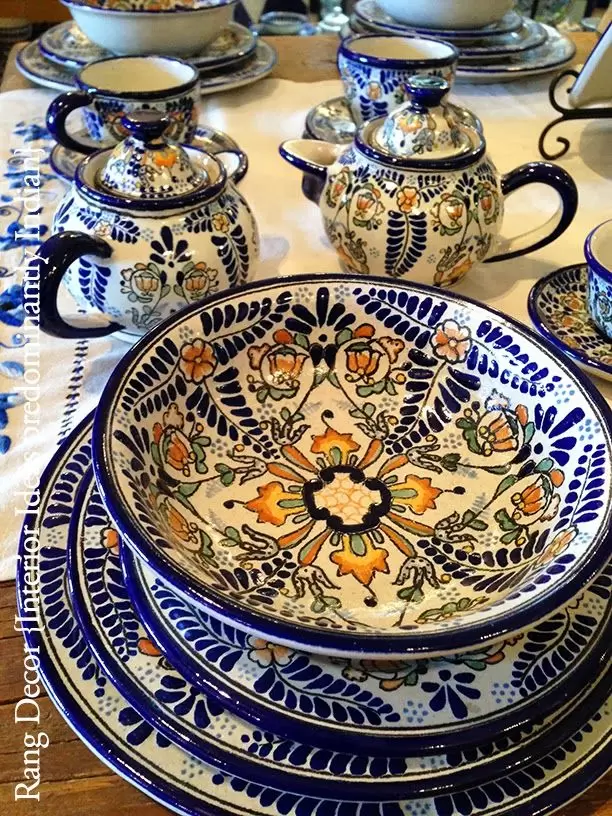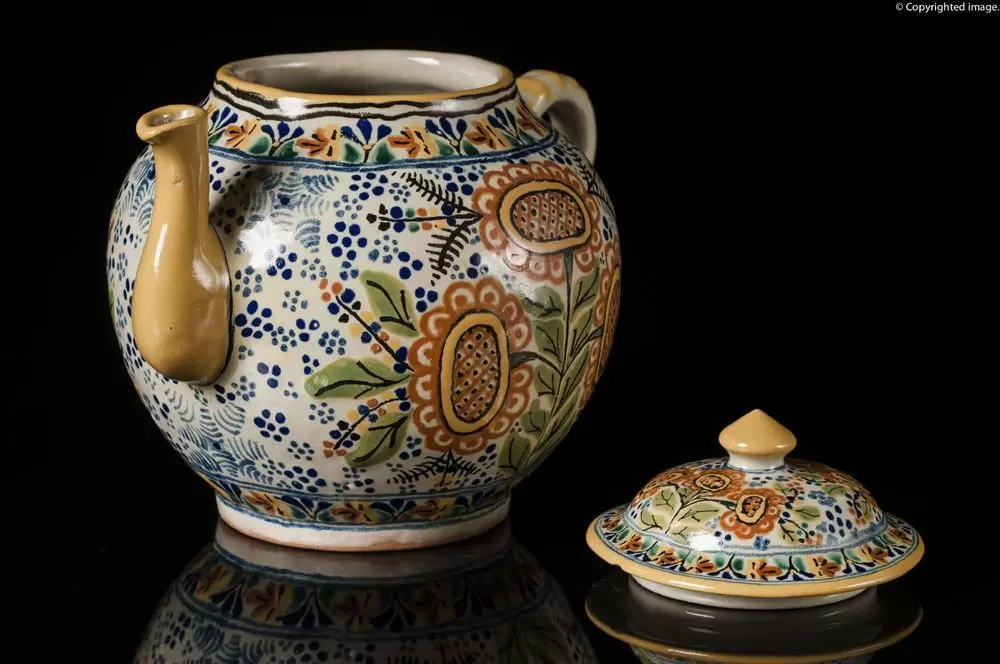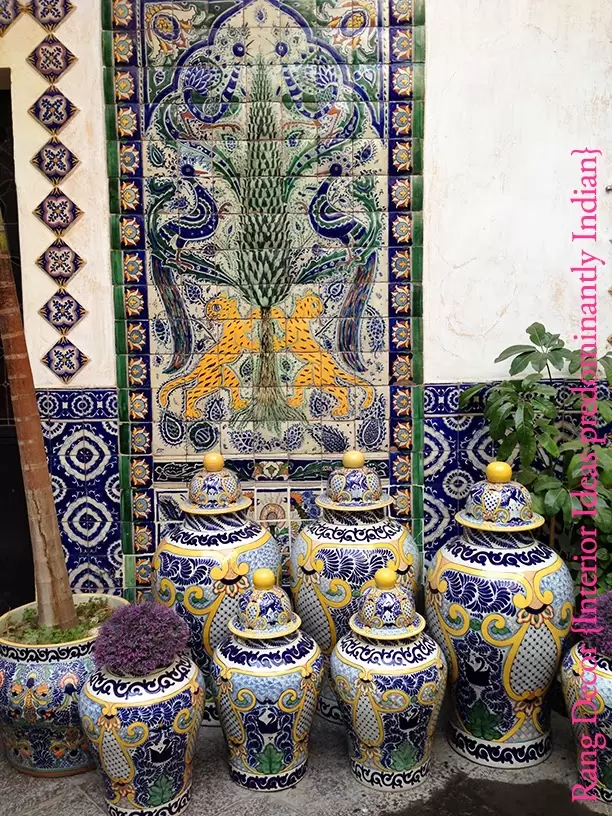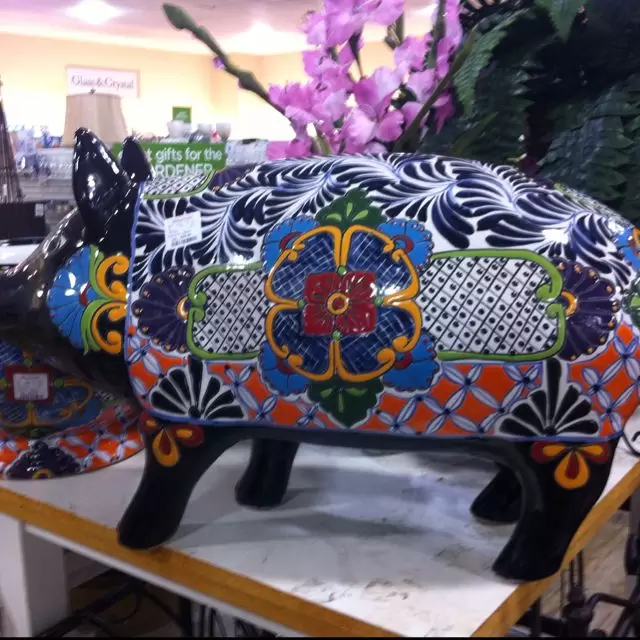Puebla is a city located in the southeast of Mexico and is one of the country's most important centers of ceramic art. The most famous ceramics produced in Puebla are Talavera.
Talavera is a ceramic style that originated from Spain and has been produced in Puebla since the 16th century. These ceramics are decorated with vibrant colors such as blue, yellow, green, and brown on a white base. Talavera ceramics are produced in various shapes and are often used as kitchenware, decorative objects, and wall panels.
In Puebla, Talavera ceramics are produced using traditional methods. Clay is kneaded and shaped by hand. Then, the ceramics are fired and glazed. This process increases the durability of the ceramics and makes the colors appear more vibrant.
Talavera ceramics are an important part of Puebla's cultural heritage and are one of the city's tourist attractions. There are many ceramic workshops in Puebla, and visitors can see how Talavera ceramics are produced in these workshops.
Talavera ceramics in Puebla reflect Mexico's cultural richness and are an important work of art. These ceramics are recognized worldwide for being produced using traditional methods and their vibrant colors.
Talavera: Traditional Ceramic Art in Puebla

In the city of Puebla, Mexico, the traditional ceramic art called Talavera is part of a centuries-old tradition. This art was brought by Spanish ceramic masters during the Spanish colonization and was adopted by the local people.
Talavera is a type of ceramic made using a white clay mixture and then decorated by hand painting. These ceramics are often adorned with vibrant colors such as blue, yellow, green, and brown, and are worked with various patterns including plants, animals, and geometric shapes.
Talavera ceramics are an important part of Mexico's cultural heritage and have become a symbol of the city of Puebla. These ceramics are used for home decoration, tableware, vases, and various other decorative products.
Talavera ceramics are popular not only in Mexico but also worldwide. These ceramics are valuable due to their handmade nature and unique designs. However, it can be difficult to determine if Talavera ceramics are original, so it is important to purchase them from a reliable seller.
The Talavera ceramic art is part of Mexico's rich cultural heritage, and the support of the local people is important for its continuation. To ensure the future of this art and its recognition worldwide, it is important to learn more about the value and importance of Talavera ceramics and to support this art.
Ceramic Art in Puebla: History and Characteristics of Talavera
Puebla is a city located in the southeast of Mexico and is one of the country's most important centers of ceramic art. The most famous ceramic produced in Puebla is Talavera. Talavera is a ceramic style that originated from Spain and has been produced in Puebla since the 16th century.
Talavera ceramics are decorated with vibrant colors such as blue, yellow, green, and brown on a white base. These colors are made from natural minerals and plant-based dyes. Other features of Talavera ceramics include fine craftsmanship, symmetrical patterns, and high quality.
Talavera ceramics are an important part of Puebla's historical and cultural heritage. The city was founded during the Spanish colonial period, and Talavera ceramics were produced during this time. The ceramics were frequently used in Spanish architecture and churches and can still be seen in the streets and buildings of Puebla today.
Talavera ceramics are not only produced for decorative purposes but also for daily use. Many restaurants and cafes in Puebla use Talavera plates and cups for serving food. Therefore, Talavera ceramics are important not only for Mexico's cultural heritage but also for tourism and the economy.
In conclusion, Talavera ceramics produced in Puebla are one of Mexico's most important examples of ceramic art. They are notable for their historical and cultural significance, high quality, and aesthetic value. Talavera ceramics play an important role in preserving and promoting Puebla's and Mexico's cultural heritage.
Talavera: An Important Cultural Heritage for Arts and Tourism in Puebla

Talavera is an important cultural heritage for handicrafts and tourism in the city of Puebla, Mexico. This craft was brought by Spanish ceramic artists during the Spanish colonization and adopted by local artists.
Talavera is a type of ceramic made using a white clay mixture. These ceramics are hand-painted and fired at high temperatures. They are famous for their colorful patterns and elegant designs. Talavera is the only type of ceramic produced in Puebla and is recognized worldwide.
Talavera plays an important role in Puebla's tourism industry. Many shops and markets in the city sell these handicraft products. Additionally, Talavera ceramics are also used in many restaurants and cafes in Puebla. These ceramics reflect the city's historical and cultural heritage.
Talavera is also important for Puebla's cultural heritage. This craft has played a significant role in the city's history. These ceramics, brought during the Spanish colonization, were adopted and developed by local artists. Talavera has witnessed many events in Puebla's history and has become a part of the city's cultural identity.
In conclusion, Talavera is an important cultural heritage for handicrafts and tourism in Puebla. These ceramics reflect the city's history and cultural identity. Talavera also plays an important role in Puebla's tourism industry, and many shops and restaurants in the city use these handicraft products.
Ceramic Art in Puebla: Production Process and Techniques of Talavera

Puebla is a city located in the southeast of Mexico and is one of the country's most important ceramic production centers. The most famous ceramic produced in Puebla is Talavera. Talavera is a type of ceramic of Spanish origin and has been produced in Puebla since the 16th century.
The production process of Talavera is quite long and laborious. First, clay dough is prepared and shaped. Then, the ceramics are dried and fired. The fired ceramics are covered with a white base and then painted. The painting process is done with hand-made designs, and each design is one of Talavera's characteristic features. Finally, the ceramics are fired again and polished.
The techniques used in the production of Talavera are also quite special. For example, the paints used for the painting process are obtained from natural minerals and are prepared using a special mixture. In addition, the brushes used during the painting of ceramics must also be specially selected.
The production of Talavera contributes significantly to the economy of Puebla. In addition, Talavera ceramics are also considered as Mexico's cultural heritage. Therefore, the production and preservation of Talavera are also supported by the Mexican government.
In conclusion, Talavera ceramics produced in Puebla are quite special in terms of both production process and techniques. These ceramics are considered as Mexico's cultural heritage and contribute significantly to the country's economy.
Talavera: The Point Where Creativity and Art Meet in Puebla

Talavera is the point where creativity and art meet in the city of Puebla, Mexico. This city is one of Mexico's most important cultural centers and Talavera is one of Puebla's most important symbols.
Talavera is a Spanish-origin ceramic art. It was brought to Mexico by Spanish ceramic masters during the Spanish colonization. Talavera emerged from the combination of Spanish ceramic art with Mexican culture. Therefore, Talavera is an important part of Mexico's cultural heritage.
Talavera is a handmade and painted ceramic art. This art is produced only in Puebla and is recognized worldwide. Talavera is painted with vibrant colors such as blue, yellow, green, and brown on a white clay. These colors reflect Mexico's natural beauty and culture.
Talavera is important for preserving Mexico's cultural heritage. This art reflects Mexico's history and culture. Talavera is a part of Mexico's cultural richness and therefore is a heritage that needs to be preserved.
Talavera is an important place for tourists to visit in Puebla. Here, visitors can see the production process of Talavera and buy handmade ceramics. Since Talavera is a part of Mexico's cultural heritage, it is important for tourists to visit.
In conclusion, Talavera is an important part of Mexico's cultural heritage. This art reflects Mexico's history and culture. Talavera is the point where creativity and art meet in Puebla and it is important for tourists to visit. Talavera is a part of Mexico's cultural richness and is a heritage that needs to be preserved.

Comments